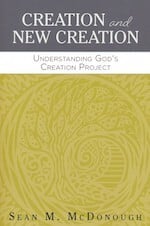The Purpose of Expanding God’s Glorious Garden
Blog / Produced by The High Calling
In this article from our series on Defining Purpose, Geoff Holsclaw tells the story of how the resurrection restores our place in the garden of God’s creation in order to restore that which is broken, to bring flourishing, and to extend God’s presence throughout the entire world.
“Can this ever be fixed?” This is a question we often ask of ourselves, our families, and especially our workplaces.
A friend asked this question of a rundown house and a neglected land. Languishing for years, the property reflected its old tenant now recently passed, bringing visible expression to the brokenness of a family wrecked by alcoholism and isolation. An unlivable house and an overgrown property was all that was left of his father.
Our lives are often like this broken-down and desolate place. Our jobs, our families, our neighborhoods—we all know the places overgrown with the effects of the fall. In the workplace, we run into those manipulating for resources, managing impossible expectations, and pushing out sub-par products. In our homes, we sacrifice relationships on the altar of ease and our health to the fires of busyness.
And Jesus, on Good Friday, seems crushed under the wheel of broken humanity. And yet…
Raised a Gardener
In Jesus we receive hope for the unproductive and overgrown places. And not just in an otherworldly or elusive way but with a very real and hopeful purpose that enters our lives concretely and creatively.
In the Gospel of John, we receive a very important detail about the burial and resurrection of Jesus, a detail through which John places a great theological truth. After his death, we read that Jesus was taken and placed in a tomb, a tomb in a garden, a garden perhaps big enough to be an orchard (John 19: 41). Much like Adam was placed in a garden, now Jesus is planted in a garden.
And then, on Resurrection Sunday, Jesus goes missing. Mary Magdalene visits the tomb and finds the stone rolled away and the body no longer there. After the other disciples come and go, she is left there, wondering what is going on. And then she sees someone. She sees Jesus but does not recognize him. We are told that she “thought he was the gardener” and asked him if he knew where the body of Jesus had been taken (John 20:15).
This is one of the great theological truths that John ironically sneaks in as a misperception. Mary thought that Jesus was merely the gardener of the place surrounding the tomb. But we know that Jesus is the true Gardener of all creation (“In the beginning the Word, and… all things were made through him” [John 1:1-3]).
In the resurrection, Jesus returns as the Gardener who will make all the dead things grow and the desolate places flourish. In the resurrection, the broken-down and desolate places find hope for renewal. And most importantly, we are reconnected with our true purpose, to flourish all of creation wherever we find ourselves.
Our Resurrection Purpose
In Jesus’ resurrection, our sorrow turns to rejoicing and our tears to celebration. But not only that. In the resurrection, life is given purpose again. Jesus, the true Gardner, is calling us back into the work of cultivating this world. And this is not a new work, but an old, old work. A work we were created for.
The resurrection purpose that Jesus offers us is not just to be planted in the garden of Eden again, but to grow the garden in every area of our lives and out into the entire world. In Genesis we have two statements about humanity. In Genesis 1, humanity is created in the “image and likeness” of God and blessed to be “fruitful and multiply, and fill the earth and subdue it.” In Genesis 2, God places humanity in the garden to “tend and keep it.” We often view salvation as a sort of return to the garden of Eden (Genesis 2) where all our needs will be taken care of. But we must also remember that we have a call as humanity (Genesis 1) to fill the earth and cultivate it.
How do we hold these two visions of humanity together? By realizing that humanity was intended to expand the garden of Eden into the entire world. This was (and is) our purpose. Humanity was (and is) intended to extend the garden of God’s presence throughout the world. This is the resurrection purpose that Jesus, the Gardener, gives to us.
Working to Expand the Garden
This resurrection purpose does not take us out of our broken-down and desolate places but gives us the hope and the help to restore all that is wrecked and to cultivate new blooming where we find lifelessness.
After seven years, my friend’s rundown house and neglected land was renovated and restored. What was overgrown had now been cleared. What had been unproductive had now been made useful. After much hard work and determination, it has been made new and given a productive purpose.
Will we be engineers, managers, consultants, teachers, administrators, and programmers (etc. etc.!) who bring a small, and yet ever-expanding, piece of the garden to our offices, schools, factories, and homes? We must, for the Gardener is risen and back at work cultivating a world for God’s presence. Will we join him?





